There’s been a bit of a lull in music news lately. It’s the end of the month, it’s summer, it’s Omaha.
I promised out-takes from these interviews, but I haven’t had time to put them together. I will eventually (or I’ll use them for other stories). In the meantime, here’s the story, which is also in the current issue of The Reader. Pick up your copy today before the August issue hits the stands…
Saddle Creek at 25
The label that defined indie cool over a decade ago is suddenly cool again.
by Tim McMahan
It was sometime in 1993 when a group of guys pulled their resources together and released a cassette tape by a 13-year-old boy named Conor Oberst. That cassette, titled Water, was the first release on Lumberjack Records, catalog number LBJ-01.
Earlier this year catalog number LBJ-270, the debut album by Stef Chura called Messes, was released on CD, LP, tape and digital by Saddle Creek Records, the company that Lumberjack Records became. The label’s name isn’t the only thing that’s changed over the past 25 years.
Just ask the Saddle Creek founder Robb Nansel. “What’s changed since we started? Everything.”
Nansel reminisced about days gone by and days ahead alongside Amber Carew, the label’s new A&R representative, over beers at The Trap Room, a small bar he co-owns along with music club The Slowdown, which sits about 30 feet south of us.
Like all independent record labels, Lumberjack/Saddle Creek started as a business run out of a bedroom. “At the time, it was very day-to-day, you know?” Nansel said of the early years. “Our concern was ‘How are we gonna put out this Norman Bailer record?’ When I had to write the business plan for an entrepreneurship class, the goal was to sell 10,000 copies of a record. That was the definition of success.”
It would take years for the label to hit that goal. Nansel said he considers the first “real” Saddle Creek release to be LBJ-19 — Bright Eyes — A Collection of Songs Written and Recorded 1995-1997 — which came out in 1998 and was the first Saddle Creek album distributed outside the area.
“Everything before that was just consignment around town — make a hundred copies of a cassette or seven inches or whatever, take them to Homer’s and The Antiquarium and call it a day,” he said.
By 2005, Saddle Creek Records had become one of the most respected and well-known small independent record labels in the country, thanks to the success of its crown-jewel acts — Bright Eyes, The Faint and Cursive. Nansel points to that period as the label’s most successful era in terms of national exposure and record sales, with all three bands releasing albums that sold more than 100,000 copies.
“That was when reporters were flying in from all around the world to write stories about what’s in the drinking water,” Nansel said, “and when Dave Sink told me not to fuck up Omaha.” Sink, the owner/operator of the late, great Antiquarium Record Store, was revered among local musicians.
“He said ‘You’re gonna ruin this town; it’s going to turn into the next Seattle,’ and I said no it’s not. We have a small label, and that’s it. There’s no venues in town, there’s no other record labels. It’s hard to have that much of an impact on a city.”
Nansel knew all the national attention wouldn’t last. “Everything’s cyclical,” he said. “Scenes happen all over the world. It just so happened that people had their microscope on Omaha then. I knew they’d move their microscope somewhere else soon enough.”
But by the time the national spotlight had shifted away from Saddle Creek, the label had built new offices in the so-called “Lo-Do” area of Omaha above what would become The Slowdown. The staff had grown to seven, including primary partner Jason Kulbel, who had originally come to Omaha to run a nightclub. Meanwhile, the roster of artists had ballooned to well over a dozen. As the label was entering its next chapter, Saddle Creek faced a number of new challenges.
In 2008, Conor Oberst signed to Merge Records, while The Faint started its own record label, Blank.Wav. And for the first time, Saddle Creek had turned its attention away from Omaha and began signing bands that had no real local connection— acts like Tokyo Police Club and Two Gallants and Canadian acts like The Rural Alberta Advantage and Land of Talk. It was a dramatic departure from the early days when Saddle Creek only signed bands that either came from Omaha or were friends of bands already on the label.
At the same time, Saddle Creek finally began to feel the impact of technology that had been ravaging the music industry for years.
Until then, the internet had been the label’s best friend. “It was so important for our growth,” Nansel said. “It allowed Saddle Creek to exist on a national level. When the major labels were yelling ‘The sky is falling,’ our business was growing. They were seeing the massive catalog sales that they’d had for decades plummet. We didn’t have a catalog, so all we saw was growth. There was a point when Saddle Creek could put out anybody’s record, and it would sell at least 5,000 copies,” Nansel said.
Fast forward just a few years and “we were putting out records that were selling like 150 copies,” Nansel said. “This was what everyone had been talking about when they said (the internet) was going to ruin the industry.”
It was a problem no one at the label had an answer for. Instead, Nansel and his staff simply put their heads down and kept going.
“We always felt that solving the music industry’s problem was not something that we as Saddle Creek were going to be able to do,” Nansel said. “That was going to be figured out by tech companies and major labels. All we could do was find bands we were passionate about and work with them and hope everything sorted itself out in time.”
Part of the answer for small independent labels like Saddle Creek has been banding together to create trade organizations that can compete with major labels for the attention of massive tech giants like Apple and Spotify, who now control the industry. The American Association of Independent Music (or A2IM) and global rights agency Merlin Network are two primary examples.
“If Saddle Creek goes up against Apple and tries to get a better deal, Apple tells Saddle Creek to fuck off,” Nansel said. “But if Merlin goes to them representing Beggars Group and Matador and 4AD and hundreds and hundreds of independent labels, then they can get a seat at the table. In a sense, Merlin and A2IM are pushing things forward on behalf of the independent label community.”
While signing those non-Omaha-related acts, Saddle Creek continued to release albums from old favorites like Cursive, The Good Life and Azure Ray while signing locals and friends like Icky Blossoms, Twinsmith and pals Big Harp. Nansel said despite new struggles to generate income via music sales, the label never signed an act with the intent of striking it rich.
“I guess I’d be naive to say that (album sales) are completely not in my mind,” he said. “There might be some super-aggressive weird punk record that I love, but then realize we can’t do anything with it. We wouldn’t be doing them a service by working with them. It would be a disastrous relationship. But I don’t think we’ve ever signed something because we thought it would sell. We have to like it first and figure out if it’s a good partnership.”
Has making money ever been a motivation?
“No,” Nansel said. “I think that’s boring. You have to work with these people every day. Imagine having to work with a band that you don’t like. You might make money, but that doesn’t sound very fun.”
Sticking with that philosophy would eventually pay off. In October 2014, Saddle Creek signed Philly band Hop Along. The folk-rock four-piece fronted by singer/songwriter Frances Quinlan hit pay dirt with its third full-length, Painted Shut, released in May of the following year. Songs like album opener “The Knock” and “Well-dressed” earned millions of Spotify plays, while publications like AllMusic.com called Quinlan “among the most captivating rock singers of her generation.”
Next Saddle Creek signed Brooklyn band Big Thief in February 2016. The four-piece, fronted by Adrianne Lenker, saw its debut, Masterpiece, released in May 2016 to a hail of critical huzzahs, but it was the follow-up, Capacity, released in June 2017, that really caught fire, making it onto a number of national critics’ annual top-10 lists. The infectious single “Shark Smile” would gain heavy rotation on nationally broadcasted (via satellite) radio station Sirius XMU.
Brooklyn singer/songwriter Sam Evian (a.k.a. Sam Owens) would come next in June 2016 and in March 2017, Saddle Creek launched its “Document” singles series that featured unreleased music from artists outside the Saddle Creek roster, starting with bands Posse, Palehound, Hand Habits and Wilder Maker.
The label was entering a third life that included opening a satellite office in Los Angeles’ Eagle Rock neighborhood with new-hire Amber Carew, the label’s first-ever A&R representative responsible for talent scouting and artist development. One of Carew’s first run-ins with Saddle Creek was when the label signed Sam Evian out from under her while she was employed at label Anti- Records.
“At the time I was like ‘Saddle Creek? I didn’t know they were still doing stuff,'” Carew said. “I was in my own bubble. Then I looked at the label and realized that Saddle Creek was putting out records I like and doing new things.”
Carew’s first signing for Saddle Creek, Detroit singer/songwriter Stef Chura, who joined the label last November and whose debut album, Messes, was re-released by Saddle Creek in February, said she was familiar with the label in high school because of Bright Eyes, who she counts as an influence.
“When (the signing) was announced, I got a lot of ‘They’re still a label?’ questions and asked if I was going to meet Conor Oberst,” Chura said. “I love a lot of their stuff, new and old; I love what they’re doing now. There are separate eras (of the label) that are attracting different audiences. They’ve always signed artists with a lot of integrity, really good songwriters. It’s a big compliment to be on the label.”
At around the same time Chura joined Saddle Creek, the label signed Chicago rockers Young Jesus, whose debut, titled S/T, they re-released in February. The album is a departure for the label, with tracks that range from six minutes to over 12 minutes, jangly noise collages and epic jams that could be filed under “experimental.” Far from a commercially influenced acquisition.
“We’re not playing the analytics game,” Nansel said. “We’re not seeing who’s got a bunch of followers on Facebook.”
“If that were the case, we would have never signed Young Jesus,” Carew adds, “or Stef. I’ve made a concerted effort to talk about the new era of Saddle Creek. When I talk to new bands, I ask them if they want to be part of it.”
Nansel said plans call for doubling the number of releases the label puts out next year. He discussed new acts that Saddle Creek is either about to sign or announce (including an Omaha band), many of which will be unknown to most fans. “They’re not even necessarily known within their communities,” he said. “They’re just brand new bands. The goal is to give people their first shot at putting out a record. It’s hard to build a band from the ground up. It’s fun. It’s the most rewarding thing possible.”
So how does a label like Saddle Creek judge success in 2018? “It’s all about streams,” Nansel said. “It’s not really about physical sales anymore. I mean, that’s an important piece of it for us and our fan base. We still like to sell records, but the number of streams is the barometer of success — how many people are listening to your band online.”
And while getting your artists’ songs added to a Spotify curated playlist is a boon, Nansel said the key is for listeners to add albums and artists to their personal lists. “That’s how you retain that listener,” he said.
Streaming also is what pays the bills these days, specifically with checks from Spotify and Apple Music. “Those two primarily,” Nansel said. “Pandora and YouTube not so much. It’s like real money now. Our Spotify check is our biggest check every month; they’re bigger than ADA, our (physical) distributors.”
Good thing, too, because the label has a lot of mouths to feed. Nansel said the staff is the largest it’s ever been with the addition of Marketing Director Katie Nowak, who literally joined the label the day of this interview. Nowak, a New Yorker, will be joining the Los Angeles staff. The Omaha staff consists of C.J. Olson, radio/project management; Jadon Ulrich, art director; Jeff Tafolla, licensing, and Sarah Murray, retail/distribution. Nate Welker, digital marketing, lives in Seattle. Jason Kulbel, who manages Slowdown and other properties, stepped away from the label years ago.
Why does the Saddle Creek bother to keep an Omaha presence? Nansel, who’s lived in LA for nearly four years, points to the staff who live here. “I have a lot of roots in Omaha,” he said. “It’s an important place to me.”
Nansel, who turns 43 this year, never thought he’d still be running the label 25 years after releasing that Water cassette.
“That’s because I’m not a planner in that way,” he said. “I never saw myself doing anything else, either. People kept making music. We kept caring about it. We kept having opportunities to do stuff with it. As long as that happens, why would we stop?”
First published in The Reader, June 2018. Copyright © 2018 Tim McMahan. All rights reserved.
 Last week Pitchfork published an article about Apple Music’s $50 million COVID-19 fund and what it means for indie labels. Apple’s program offers interest-free loans against future royalties to indie labels and distributors that earn more than $10,000 through Apple Music per quarter and have a deal with Apple.
Last week Pitchfork published an article about Apple Music’s $50 million COVID-19 fund and what it means for indie labels. Apple’s program offers interest-free loans against future royalties to indie labels and distributors that earn more than $10,000 through Apple Music per quarter and have a deal with Apple.

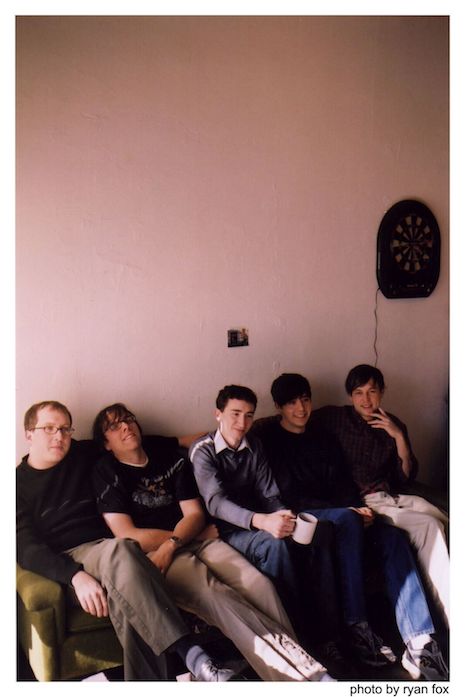
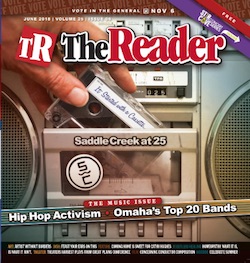
 by Tim McMahan,
by Tim McMahan, 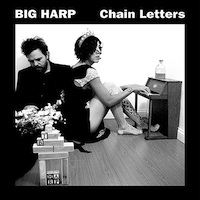

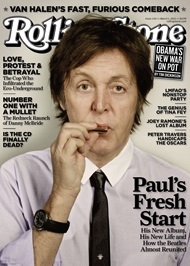
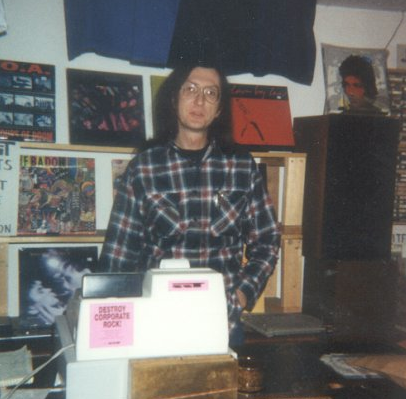

Recent Comments